TORONTO (Dec. 30) — I recently passed the five–year anniversary of my second career, as a funeral director’s assistant at Benjamin’s Park Memorial Chapel, a century–old family business on Steeles Ave., north of the city.
You can likely imagine it a rather contrasting experience to covering the Toronto Maple Leafs as a reporter, which I did, home and away, for 17 years at The FAN–590, Canada’s first all–sports radio station. Each role involves working with the public, but in vastly disparate circumstances. The very concept of death is foreign and fascinating to most people. As such, I have often been encouraged to write about my adventures, if you will, at Benjamin’s. And, since I have a few days off during the holiday, today marks a convenient time. This could easily take the form of a book manuscript. Given, however, the constraints of a blog, I will encapsulate.
Several rules persist. Nothing in our industry is more imperative than confidentiality. To not even our closest family members can we divulge such information as cause of death… or any details regarding a deceased person and his/her family until an obituary appears on our website and/or in the newspaper. This is neither privilege nor accommodation. Rather, it is industry “law.” And, common sense. So, names will be largely avoided here.
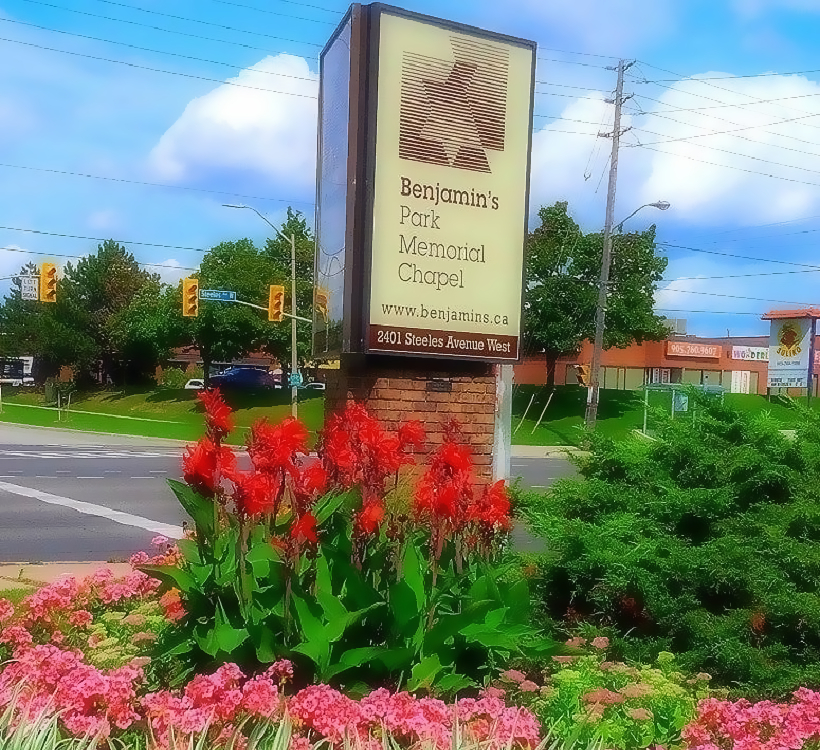
If I had fifty dollars for every time I’ve been asked “what’s the worst thing you’ve seen”, I’d be writing this blog in retirement. Almost exclusively, unpleasant experiences involve a trip to the coroner’s office. A body becomes a coroner’s case after an accident (usually automobile); undiscovered death (a person dies alone and isn’t found for a number of days); suicide, or any suspicion of foul play. When retrieving a deceased at the coroner, personnel routinely open the body bag for identification. Someone in my job cannot run and hide, even if so–compelled.
As for the most–unpalatable sights, two immediately come to mind:
A man killed himself by jumping off a bridge into highway traffic. Upon viewing the grossly mangled body, all parts (arms, legs, head) had been appropriately arranged by the pathologist. But… none were attached.
The biggest fear I encountered while driving to the coroner involved a couple that had burnt to death in a car accident. I had to mentally prepare and was supplied the best information by my veteran colleague. Along the way, I couldn’t help but lament the horrendous demise these people encountered. In the body bag were two human figurines; neither with an identifying feature, and both absolutely pitch–black. Yes, the moment was surreal.
Another occasion brings a bit of a chuckle, because I wasn’t ready for it. As you know, people often donate organs to science or for transplant. If the eyes are removed, a pathologist will often pack the vacated regions with cotton or gauze. This time, there was no–such courtesy and I unsuspectingly looked into a pair of open sockets. Yeesh!
The saddest and most–demoralizing moments involve children or young people. Overwhelmingly, we handle those that have lived lengthy and full lives. But, not always. As long as I have my faculties, I’ll remember the heart–wrenching sight of a mother, at a downtown hospital, naturally cradling the body of her two–year–old child. My colleague and I stood by for as long as we could and then somehow coerced the devastated woman into releasing her grip. Neither of us spoke a word on the drive back to the chapel. Another time, I picked up a 10–month–old baby. A hospital worker unwrapped the blanket for identification. There, before me, was the sweetest, most–beautiful and precious little soul imaginable. I was alone on that drive back to Benjamin’s. With many tears.
Unavoidably, we encounter unpleasant smells. Any person in our industry that claims he or she has grown accustomed to the odor of human decomposition is, if not outright lying, then at least fudging the truth. This is multiplied many times over with the stench of rotting flesh (I’ve been there twice). Thankfully, neither experience is particularly common given that Jewish custom requires preparation and burial normally within 24 hours of death. The level of decomposition (visual and nasal) is therefore minimal. Occasionally, mainly during the winter months, a resident of our city will die in Florida. This necessitates the body being flown to Toronto, which naturally increases the interval between death and preparation. And, that is when unpleasant odors are more prominent (it also works the opposite way; people die in Toronto that are to be interred elsewhere). If you’re wondering about the process of such a lengthy transport, it begins with a body undergoing bio–seal. This involves hermetically securing the deceased in a dense, anti–contaminant body bag, at the end of which most of the air is vacuumed. The bag and its contents ultimately resemble a freeze–dried item. The bag is then placed in a thick, cardboard container that can withstand the rigors. On each box are the unmistakable words “HUMAN REMAINS, HANDLE WITH CARE.”
Every funeral is a one–off. There is zero margin for error. If I foul up while guiding pallbearers from the hearse to a grave, I cannot ask them to turn around; put the casket back in and shut the door. Even amid this routine process, there are customs; primarily, maneuvering the body feet–first, in the practice of Judaism. This is done whether in front of a large gathering, or alone in a hospital, home or the chapel. Most Jewish cemeteries are ordained in a north–south configuration. This allows for the feet of a deceased, when buried, to be pointed eastward. Jews and Muslims carry out the same tradition. So, if the body could “stand up”, it would be facing toward Israel. Or, Mecca.
Approaching a plot on the east side of a cemetery aisle requires a simple left or right turn. If on the west, I must guide pallbearers slightly beyond the grave and ask them to carefully switch hands. We then proceed head–first onto the lowering device. Several times, I’ve been asked “why did you ‘miss’ the grave?” Now you know.
Do we err now and then? All endeavors involving the human species result in occasional misstep. Do we err grievously? I’ll answer that with two other questions: Can a person be struck by lightning? Does an individual win the national lottery, with odds in the multi–millions–to–one? Both happen. In our profession, the chances of a noticeable mistake are similar. This is the result of many checks and balances involving every body in our care. It’s the same reason that a newborn is rapidly affixed with an identifying ankle tag. Any parent will tell you, from experience, that a baby can look astonishingly different after its first bath, upon the removal of vernix and amniotic fluid.
In our industry, there’s a remarkable sameness to an adult body wrapped, from head to toe, in a white burial shawl. Neither is it uncommon, on days when there are multiple services, for families to have selected the identical casket models. Absolute attention to detail is mandatory. Prior to “casing” a body (placing it in the casket), we do not unfurl the face and compare it to a photo of the living years. Any such identification is long in the past. We must therefore take unqualified care in placing the correct body in the correct casket. For obvious reasons, this is magnified when family members wish to view a loved one prior to the funeral. Final shrouding of the face is carried out by a member of our Chevra, a shomir (or guardian of the deceased) once the viewing is completed.
Every funeral is treated as the most–important of all time. There is no other way to properly execute the role.

Toronto has a large and affluent Jewish community. Working the funeral service of a well–known person is not uncommon. In my first weeks at the chapel, I was part of a contingent deployed for the double–service of Barry and Honey Sherman, the billionaire couple found murdered in their home. This made international headlines. Barry Sherman was the founder of Apotex, one of the world’s largest pharmaceutical companies. The funeral attracted more than 7,000 mourners, including Canadian prime minister Justin Trudeau; then–Ontario premier Kathleen Wynne and Toronto mayor John Tory. The Sherman family rented an enormous hall at the Toronto International Centre, across from Pearson Airport. In December 2021, I had the solemn privilege of driving Mel Lastman to his final resting spot at Mount Sinai Cemetery on Wilson Ave. Mel had been the many–times mayor of our city.
I have frequently been asked how it is possible to “enjoy” my job. I normally reply that “enjoyment” isn’t part of the equation. For me, it is more of a paid duty and honor. The “enjoyable” part is working alongside a group of dedicated colleagues and friends. As in any work environment, there are petty disagreements and unavoidable differences in personality. What I am most proud of, after five years, is the manner in which these minor quarrels are routinely shelved. Once a funeral service begins, we become the closest of teammates. All energy is directed toward the deceased and his/her family. It is their time, exclusively, for comfort and attention.
The first question I was asked in my interview for the job, quite naturally, was: “Can you look at a dead person?” At that point, I had viewed, in their caskets, both my maternal grandparents; my paternal grandmother… and, most forlornly, my 57–year–old Mom. So, yes, I felt I could tolerate the sight of a deceased stranger. The other requirements are the three pillars of life: love, compassion and respect. Which my parents, Sandee and Irv (still kicking around in his 90th year), liberally bestowed upon me from earliest recollection.
I hope I’ve answered some of the most–common funeral mysteries.
And, I wish you all a happy, healthy new year.
EMAIL: HOWARDLBERGER@GMAIL.COM








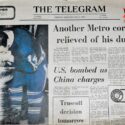












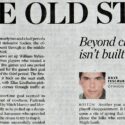

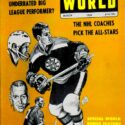





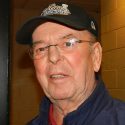






Hi Howard.
Thanks for sharing your insight and experiences.
I’m happy you chose this profession, as it gave me the chance to finally meet you and chat about hockey and the Leafs.
Happy New Year to you and you family.
For me, your timing is impeccable but when next we meet, I’m still going to ask you how you went from Sports Broadcaster to Assistant Funeral Director.
You’re my inspiration, as Peter Cetera once wrote. Hope you are hanging in, my pal.
That was a very interesting and solemn read, thanks Howard.
You forgot to mention in your blog about your five years was as the result of your Aunt’s suggestions to apply for the job. Congratulations Howard on your anniversary.
Aunt Linda
The world already knows about that. 🙂